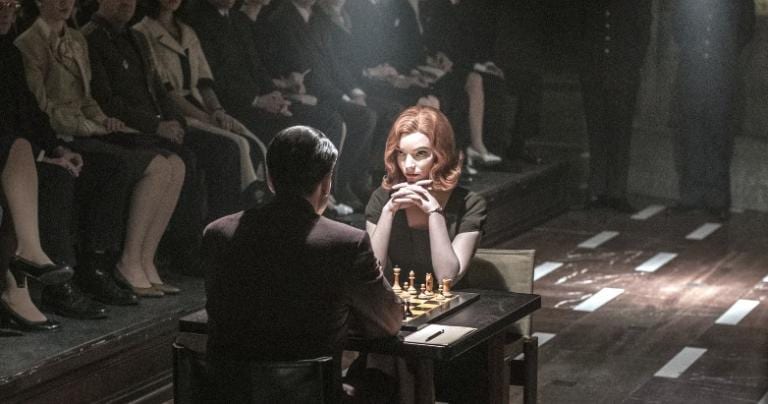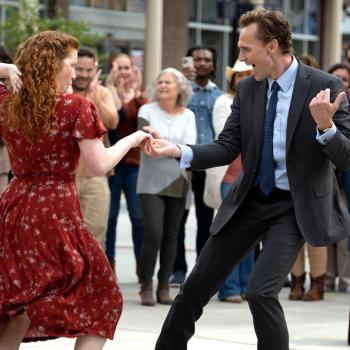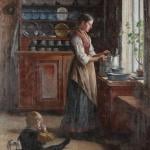
One of my goals in this blog is to examine how various shows and movies tackle Christianity, especially when they’re not aimed at the faith audience. Sometimes, that’s the only reason I watch something. Answering some pesky questions from the pilot about a nun and a rosary is all that kept me tuning in to HBO’s Watchmen and sticking it out to the end, that’s for sure.
(More here on that.)
But that wasn’t the case with two recent “prestige TV” series: Netflix’s The Queen’s Gambit and HBO’s Lovecraft Country. I watched out of curiosity and wasn’t expecting either to be about faith, but both included it. In this post, I’ll start with the Netflix one (click here to see what I had to say on Lovecraft Country).
(WARNING: PLENTY O’ SPOILERS)
What is The Queen’s Gambit?
The Queen’s Gambit is the hot binge du jour, so I checked it out. Anya Taylor-Joy stars as Beth, a traumatized, socially awkward Kentucky girl orphaned (in a likely murder/suicide attempt by her brilliant but unhinged mother) in the 1950s, who grows up to be a sleek, stylish, substance-abusing chess champion in the 1960s.
As a girl who began playing chess as a kid, how could I resist? Based on Walter Tevis’ novel (so NOT a true story), The Queen’s Gambit is handsomely produced and highly stylized — much like Taylor-Joy’s last project, a delightful, mannered, candy-colored feature-film adaptation of Jane Austen’s Emma.
With her pursed lips and enormous wide-set eyes, Taylor-Joy has a unique look, and, after her character sheds an initial dowdiness, is exquisitely costumed and coiffed in high ’60s style (the show also highlights ’60s music, which remains fresh and vibrant today). So, the thing looks great (especially Beth’s endlessly perfect winged eyeliner).
It also achieves the very difficult task of making a board game both thrilling and enthralling to more than just the people playing it.
Where Does Faith Come In?
The orphanage Beth goes to at the age of eight is an obviously Protestant Christian one. It does dole out tranquilizers to keep the girls in line (probably lots of places like this did), but there are no Dickensian instances of mistreatment or abuse. I don’t know what real orphanages were like in the ’50s, but as fictional ones go, this one’s not bad. The faith, though, fails to penetrate Beth at all. Instead, her religion is chess, taught courtesy of a reclusive janitor (Bill Camp).
When the janitor dies many years and episodes later, Beth attends his apparently Episcopalian (or Methodist or Lutheran) funeral with her long-lost orphanage bestie, Jolene (Yale School of Drama grad Moses Ingram), and it’s obvious that neither girl is a believer.
That’s emphasized when Beth rejects money from a Christian group looking to piggyback some evangelization on her trip to Moscow for a chess tournament. She hands back a statement they wrote for her (we never hear the contents), rejecting it as “f—ing nonsense.”
But, back in the episode with the janitor’s funeral, Beth revisits the orphanage and the basement. The soundtrack for that is the orphan girls in chapel, singing chant in Latin — in a Protestant orphanage in the South.
So, again, writers, directors or whomever, don’t know the first thing about Christianity but love to use its trappings when convenient. As I discussed in my last post, about today’s largely Christ-free Christmas movies, I could use the language of the woke wags among us and call this cultural appropriation. But, alone among all peoples, Christians are told not to be sensitive about such things.
Frankly, I find it to be lazy writing, taking cheap shots rather than really using faith (or even the lack of it) as an honest story element (which isn’t the case with Lovecraft Country).
So, What Is The Queen’s Gambit About?
Critics have lavished love on The Queen’s Gambit, and it was entertaining if rather predictable (but, then, it’s a sports tale, after all). Everyone has their take on it, but to me, it’s ultimately a story about the uses and abuses of celebrity. Beth is supremely gifted and supremely selfish (yes, in life, the two often go together).
People help her, and she’s sometimes grateful, but she’s not seen doing anything for anyone else — other than upping her adoptive mother’s request for a 10 percent agent’s commission to 15.
Everyone’s interested in Beth because she’s talented and becomes famous (being very slim and pretty doesn’t hurt), not because she’s especially warm or kind or compassionate or often even polite. She’s a genius, so nobody requires her to be a decent human being (which, if it had ever happened, could have done her some good).
Her romances are with men who can help her (and with a guy who turns out to be gay but helps her anyway because — talented and famous). She only gives when she’s getting something in return, and when that’s over, it’s over. Some might find that empowering, but I just find it sad (it’s sad when men do it, too).
More on That “Female Empowerment” Thing
Also, there’s a “you go, girl” thing going on, and a lot about Beth being a woman in a male-dominated world. In chess, that’s quite true, even today. But, the men portrayed, while occasionally snippy or clueless, are mostly civil and helpful to her, and she’s never manhandled or abused. In fact, the night before her big Russian match, a bunch of guys back in America — including two she slept with, who walked away from her because of her indifference — join forces to help her figure out a winning strategy.
I guess the message is, to paraphrase a ’60s classic, she gets by with a little help from her (male) friends.
You could argue that all the other chess players at the time were guys, and that’s mostly true, but even so, this a fictional story. There could have been one female she regularly played chess with (I say that as a girl who, as I said, plays chess).
We end the story with Beth in her early to mid-20s, at the apex of her chess career. The pathos of a good sports story is the realization that glory is almost entirely for the young and extremely fleeting. And, Beth has yet to face the 1970s. How will she turn out? My guess is not well … but, that’s another story.
Should Kids Watch?
As for content, there’s bad language and lots of drinking, pill-popping and marijuana-smoking, but no nudity and no graphic sex. As a coming-of-age story — and a period piece about the ’60s — it could provide some fodder for conversation with older teenagers, if parents watch with them (I know, but I live in hope).
https://youtu.be/CDrieqwSdgI
Image: Netflix
Don’t miss a thing: Subscribe to all that I write at Authory.com/KateOHare.














